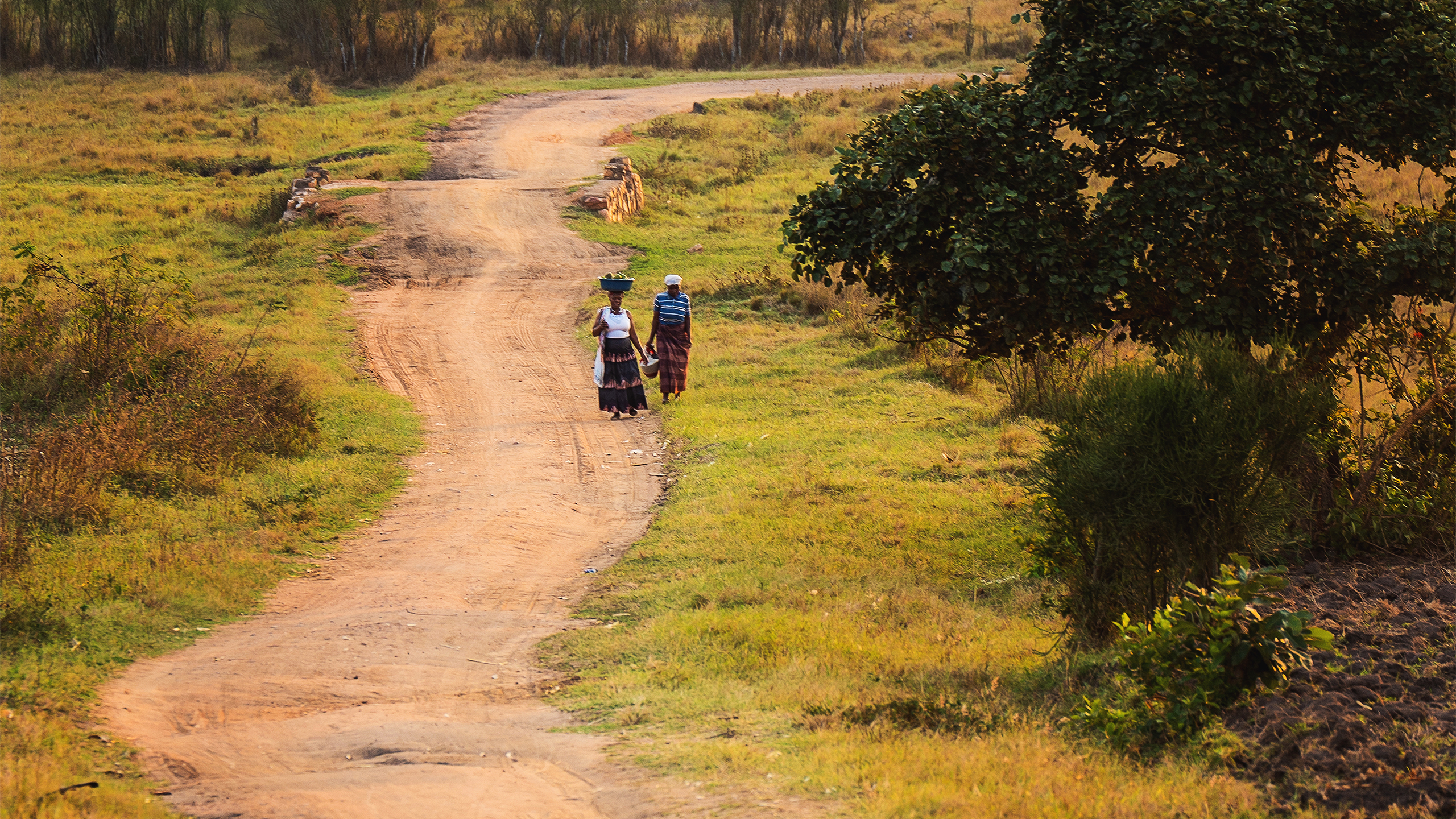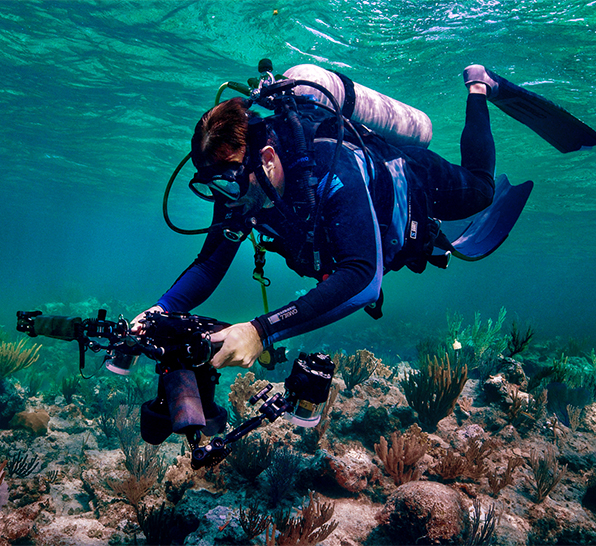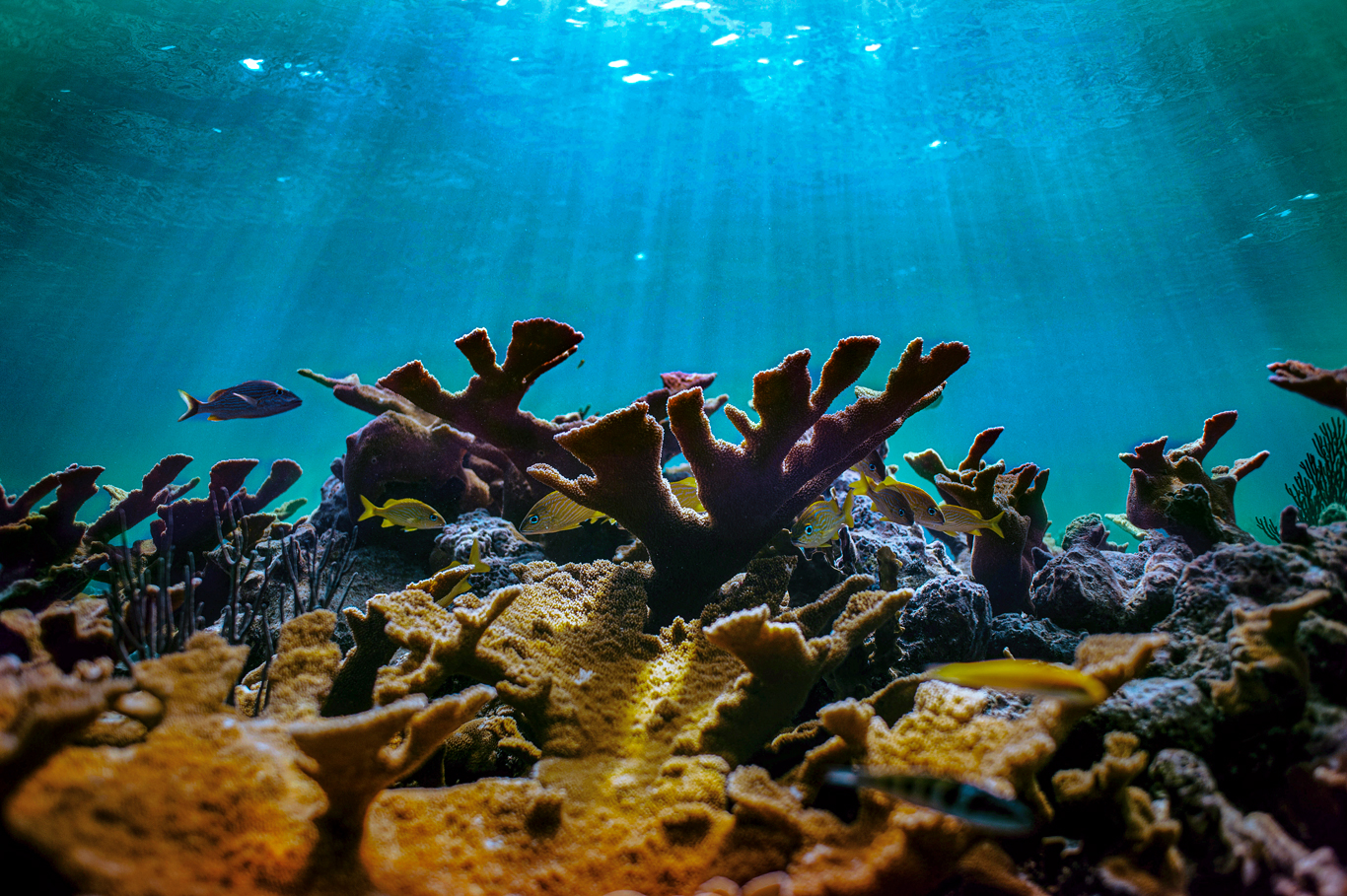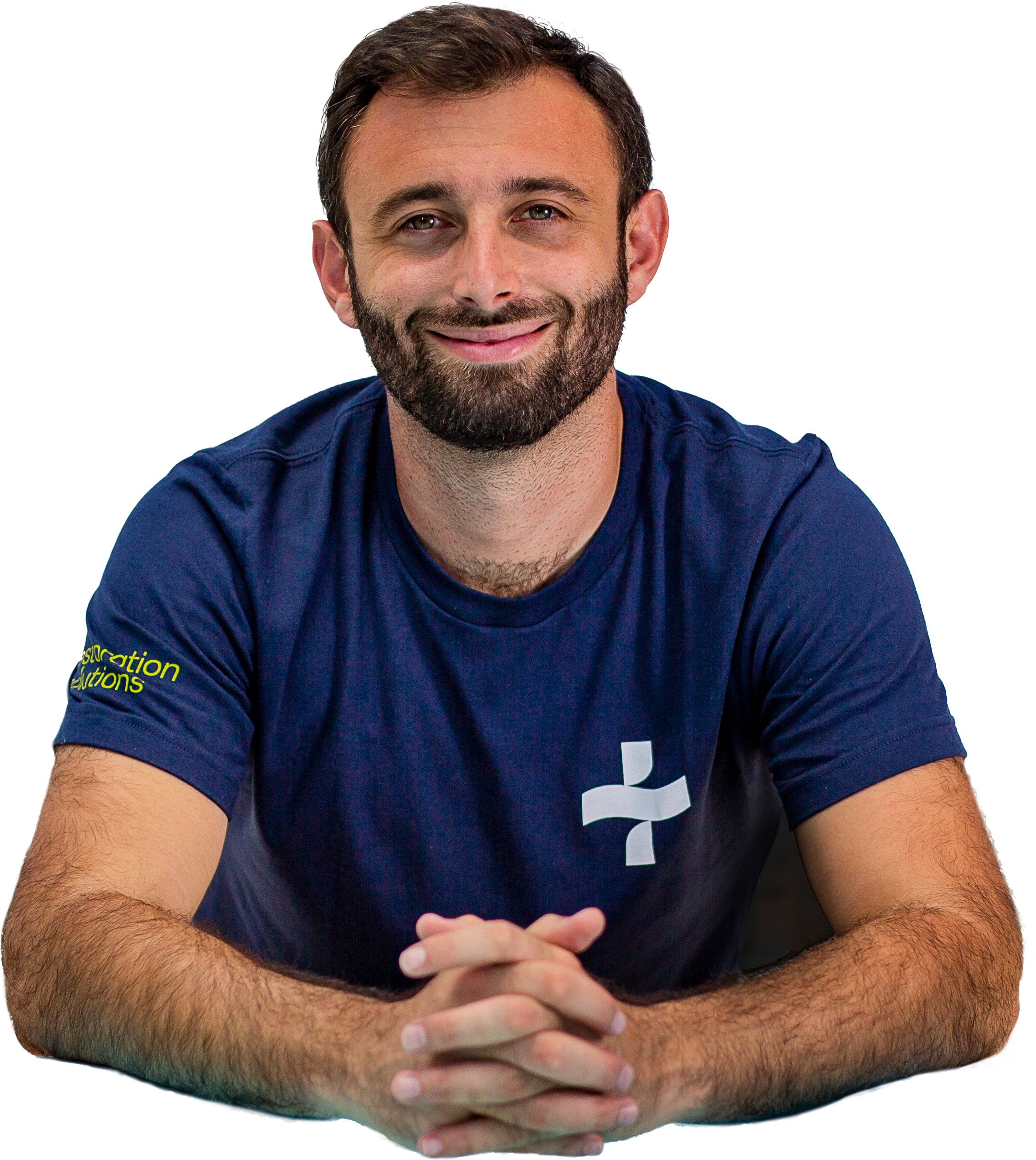







Through innovative restoration methods, the Bahamas-based company is growing climate change-resistant corals and planting them into degraded reefs.
Coral reefs are the cornerstone of aquatic life. At some point in their lifecycles, 25% of all marine life will be dependent on these diverse ecosystems. But their impact stretches ashore as well. Coral reefs serve as the backbone of coastal economies, fueling the tourism, fishing, and recreation industries. They also offer critical protection from storms and erosion across shorelines. But despite their critical importance, coral reefs are at risk of total collapse: Scientists estimate that, due to human-induced climate change, overfishing, and pollution, more than 90% of reefs will die by 2050; in the last three decades alone, coral cover in the Caribbean has decreased by 60%. And as the consequences of diminished reefs will have myriad impacts globally, mitigating the current crisis is a dire need.

Growing a restoration revolution
The need for a scalable solution prompted Coral Vita’s founding in 2015. During Halpern’s time in graduate school, conducting climate change research projects at the Yale School of the Environment, he met his co-founder, Sam Teicher, a seasoned diver who was pursuing an environmental policy track. “We both felt that, while we were working on the issues we cared about, we weren’t really making the impact we wanted to see in the world,” Halpern recalls. The two chose to step outside the world of academia and policy to pursue an entrepreneurial route and start a mission-driven company.
With a $1,000 grant from Yale, Halpern and Teicher traveled to the Florida Keys to meet with researchers at the Mote Marine Laboratory & Aquarium, who were on board with their vision of reef restoration at scale. “The traditional model is largely funded by grants and donations,” explains Teicher. “Corals are basically grown in these beautiful underwater gardens in the ocean, but that doesn’t really scale to meet the scope of the problem.” Instead, the two wanted to utilize a commercial approach through a company that would develop high-tech coral farms by way of cutting-edge science, all with the goal of making holistic restoration possible at scale.
To do that, they needed to establish multiple revenue streams, the first of which is ecotourism. Coral Vita’s farms are set up as tourist attractions and education centers for the local community, where school and tour groups frequently come to learn about the importance of coral reefs and reef restoration. To supplement these efforts, the organization is also tapping into emerging conservation financing mechanisms, such as biodiversity credits, blue bonds, and reef insurance policies, and is one of the first entities awarded funding through the new Global Fund for Coral Reefs via its “Bahama Reefs” project. But for Teicher, one of the most exciting scalable streams is selling reef restoration as a service to a range of stakeholders, such as resort operators, governments, and marine park managers—entities that stand to lose significant capital as reefs degrade.
Back to home
Back to home
Revolutionizing reforestation:



Eco•pre•neur: an environmentally minded entrepreneur who leads and drives climate action worldwide
Reef restoration startup Coral Vita, winner of the 2021 Earthshot Prize, has met the moment with urgency. Through cutting-edge scientific techniques, the company develops land-based coral farms, where they grow climate change-resistant corals at scale—and then plant them directly back into reefs to sustain them for decades to come.
“Corals are magical creatures,” says Gator Halpern, Coral Vita’s co-founder and president. “Creating coral colonies—which can grow as large as minivans or even houses—can take thousands of years because the corals are growing dense rock skeletons. That timeframe is tough to work with in terms of restoration. We can’t wait decades for a coral to mature before we plant it back out in the reef. That’s why we’re accelerating growth rates by up to 50 times faster than corals grow in nature.”
Instead of waiting for these rock skeletons to grow, Coral Vita uses a 3D printer to create a foundation supplemented with different substrates. Then, the company grows the actual living coral tissue over it and fuses the new coral to the existing reef. The result? Mature-size coral colonies in months or years, not decades or centuries.
This need for speed is paramount. “The longer we wait to make significant changes in how we treat the environment, the more difficult it’s going to be to sustain ecosystems into the future, which in turn, really sustain all of us,” Halpern explains. “We’ve seen how quickly reefs have degraded in the past few years. The numbers have already shifted dramatically: Over one-half of the world’s reefs have already died. So, it’s extremely clear how urgent an issue this is. We have to act now.”
An aquatic call to action
Cultivating resilient corals is only the first part of Coral Vita’s operation. Once the corals are ready to leave the farm, the team must transplant them back into the ocean—and the process isn’t as straightforward as it may sound.
“On water operation days, we have a lot of moving parts,” says Joe Oliver, Coral Vita’s director of restoration operations. Even in shallow waters, scuba diving can be dangerous. He’s always mindful of the team’s safety and the safety of the corals, which are loaded onto the boat last and transported in coolers for maximum comfort. “We don’t want to plant coral on a rough or stormy day, where we’re going to get beat up, and they’re going to get beat up.” When he and his team are working underwater, they rely on dive slates, hand signals, safety protocols, and a topside diver, who alerts the crew if danger is afoot and they need to resurface—or if it’s storming and they need to stay below the surface where it’s safer. “It can be very technical and complicated work, but if it was easy, everybody would be doing it.”
This work can also be emotionally taxing. When he’s not thinking about how to improve what the team is doing, Oliver is thinking about the imminent threat reef degradation poses. In The Bahamas, it’s hard to overlook. “So many organisms in other fisheries are intertwined with reef health,” he explains, citing the queen conch fisheries as examples. “Depending on who you ask, we have 10 to 20 years before they’ll collapse as viable fisheries. That means a staple food and economic source with deep cultural roots for a lot of local people will no longer be available. It’s detrimental not only for the ecosystem, but for the economy and everyone who relies on it.”
©2022 Fortune Media IP Limited. All Rights Reserved. Use of this site constitutes acceptance of our Terms of Use and Privacy Policy (Your California Privacy Rights) | CCPA Do Not Sell My Information Fortune may receive compensation for some links to products and services on this website. Offers may be subject to change without notice. Quotes delayed at least 15 minutes. Market data provided by Interactive Data. ETF and Mutual Fund data provided by Morningstar, Inc. Dow Jones Terms & Conditions: S&P Index data is the property of Chicago Mercantile Exchange Inc. and its licensors. All rights reserved. Terms & Conditions. Powered and implemented by Interactive Data Managed Solutions. | EU Data Subject Requests
Boosting Coral Resiliency


Listen to Gator Halpern on why Coral Vita’s
work gives him hope for the future.


[CUSTOM BANNER AD]
[FPO Looping Video]
EXPLAINER: See how Coral Vita’s high-tech farming process is helping restore the long-term health of coral reefs.

How Coral Vita is leading
the charge to restore coral reefs


Coral Restoration Specialist, Coral Vita
ALANNAH VELLACOTT
Every day is a new day in science. How fast
does coral grow when you cut it? How tiny
or how big should we cut these fragments to trigger the rapid healing response? A lot of
these questions are being answered around the world, but on this level, it’s scalable, and that’s really important in the future of reef restoration.”
“

Answering these questions will help the Coral Vita team build as much resilience into the corals as possible, from both a genetic and a climate resistance standpoint. As climate change drives warmer ocean temperatures globally, Coral Vita aspires to create corals that can survive in much warmer, more acidic waters. They collaborate with researchers around the world to advance assisted evolution and create resilient genetic stocks that can later be transplanted under the reefs—and do it at scale. “We’re very focused on creating a production technique,” says Halpern. “A kind of factory style that combines the latest scientific learnings with a production line that results with hundreds—hopefully millions and eventually billions—of corals back on the reef.”

This multifaceted strategy is essential for bolstering Coral Vita’s one-of-a-kind approach to restoration. “We grow all sorts of coral species here because reefs aren’t a monoculture,” says Alannah Vellacott, who works as a coral restoration specialist at the company’s flagship farm in Freeport, Bahamas. Most oceanic restoration efforts haven’t worked with many of these species to the same extent that Coral Vita has. “Every day is a new day in science. How fast does coral grow when you cut it? How tiny or how big should we cut these fragments to trigger the rapid healing response? How long does that healing response last?” asks Vellacott. “A lot of these questions are being answered around the world, but on this level, it’s scalable, and that’s really important in the future of reef restoration.”



Listen to Joe Oliver on how Coral Vita is
maintaining the natural biodiversity of the reef.


Oliver also understands the ocean might be “out of sight, out of mind” for some. As he sees it, people are often driven to inaction when they feel so far removed from the ocean, believing that their actions either have no impact or an impact so insignificant that it doesn’t matter. But his response to that is a rallying cry.
“If you live in Kansas, Manitoba, the middle of Brazil, Uganda—wherever you are, you’re connected to the ocean. All of these systems interplay with one another, and you do have an impact; whether it’s a positive or negative one is up to you,” he says. “It’s not really possible to have a healthy planet without healthy oceans.”

Vellacott echoes Oliver’s sentiments. A Bahamas native, she grew up in a community that bordered a creek of mangroves, which are nursery grounds for countless fish species. Much of her childhood was spent fishing and exploring the surrounding area; now, she can hardly recognize the same spots, if she can locate them at all. “The reef is dead, degraded, or just gone,” she explains. “It’s heartbreaking because it was a part of my childhood, but that was a whole ecosystem that took care of fish and the larger species in that area. I’m supercharged every day that I come to work because I want to be able to give that back, to give it to my children and their children. I wish everyone could see how I see the ocean and coral reefs. People only protect what they know or what they understand—my passion and my purpose is to give my love of the ocean to everyone, so we all can work together to protect it.”

Read More
BEHIND THE SCENES: Episode 7 of The Ecopreneurs in the Bahamas.
Read More
MEET THE ECOPRENEUR: Sam Teicher of Coral Vita.
Explore More


Read More

Back to home
How OffGridBox is providing equitable access to clean water and electricity in East Africa
Eco•pre•neur: an environmentally minded entrepreneur who leads and drives climate action worldwide

Back to home






Growing a restoration revolution
The need for a scalable solution prompted Coral Vita’s founding in 2015. During Halpern’s time in graduate school, conducting climate change research projects at the Yale School of the Environment, he met his co-founder, Sam Teicher, a seasoned diver who was pursuing an environmental policy track. “We both felt that, while we were working on the issues we cared about, we weren’t really making the impact we wanted to see in the world,” Halpern recalls. The two chose to step outside the world of academia and policy to pursue an entrepreneurial route and start a mission-driven company.
With a $1,000 grant from Yale, Halpern and Teicher traveled to the Florida Keys to meet with researchers at the Mote Marine Laboratory & Aquarium, who were on board with their vision of reef restoration at scale. “The traditional model is largely funded by grants and donations,” explains Teicher. “Corals are basically grown in these beautiful underwater gardens in the ocean, but that doesn’t really scale to meet the scope of the problem.” Instead, the two wanted to utilize a commercial approach through a company that would develop high-tech coral farms by way of cutting-edge science, all with the goal of making holistic restoration possible at scale.
To do that, they needed to establish multiple revenue streams, the first of which is ecotourism. Coral Vita’s farms are set up as tourist attractions and education centers for the local community, where school and tour groups frequently come to learn about the importance of coral reefs and reef restoration. To supplement these efforts, the organization is also tapping into emerging conservation financing mechanisms, such as biodiversity credits, blue bonds, and reef insurance policies, and is one of the first entities awarded funding through the new Global Fund for Coral Reefs via its “BahamaReefs” project. But for Teicher, one of the most exciting scalable streams is selling reef restoration as a service to a range of stakeholders such as resort operators, governments, and marine park managers—entities that stand to lose significant capital as reefs degrade.
BOXKEEPERS ARE RESPONSIBLE FOR SO MUCH. AND THEY’RE OUR FACE IN THE COMMUNITIES—THEY’RE HOW WE BUILD OUR RELATIONSHIPS WITH PEOPLE AND HOW WE MAINTAIN A HIGH LEVEL OF SERVICE.”
“

Read More
BEHIND THE SCENES: Episode 7 of The Ecopreneurs in the Bahamas.
Read More
MEET THE ECOPRENEUR: Sam Teicher of Coral Vita.
Explore More
[CUSTOM BANNER AD]





